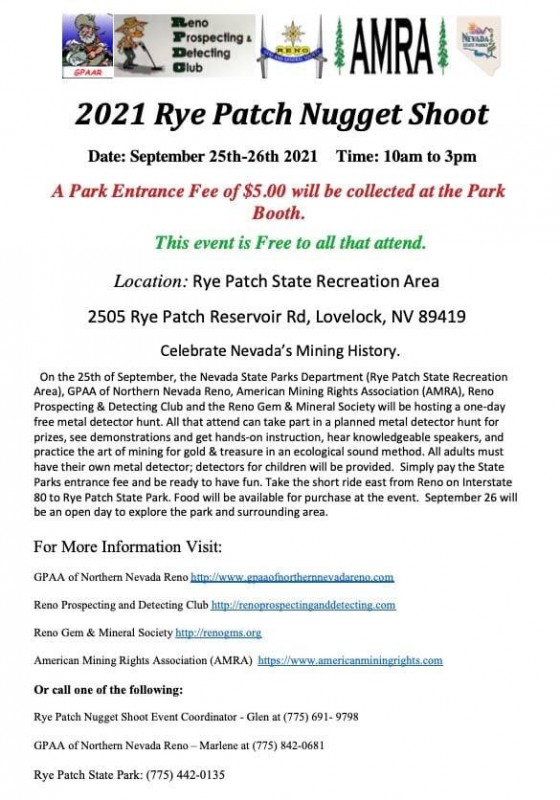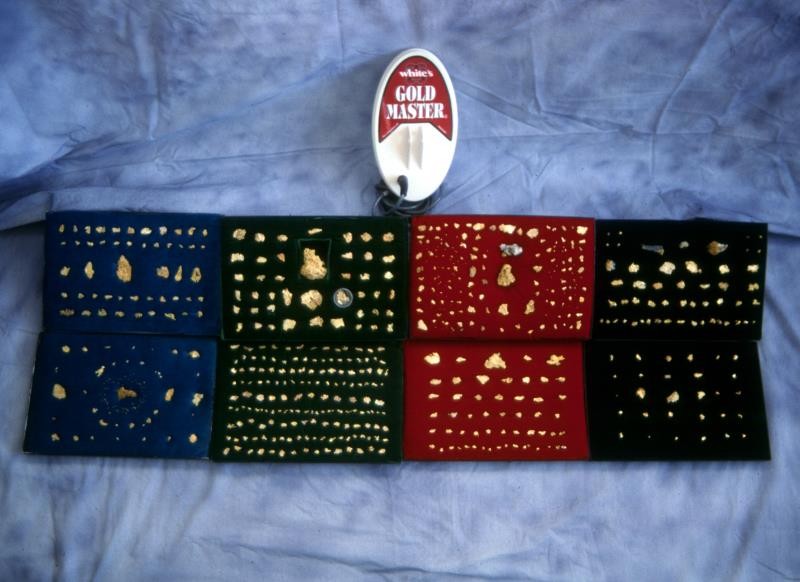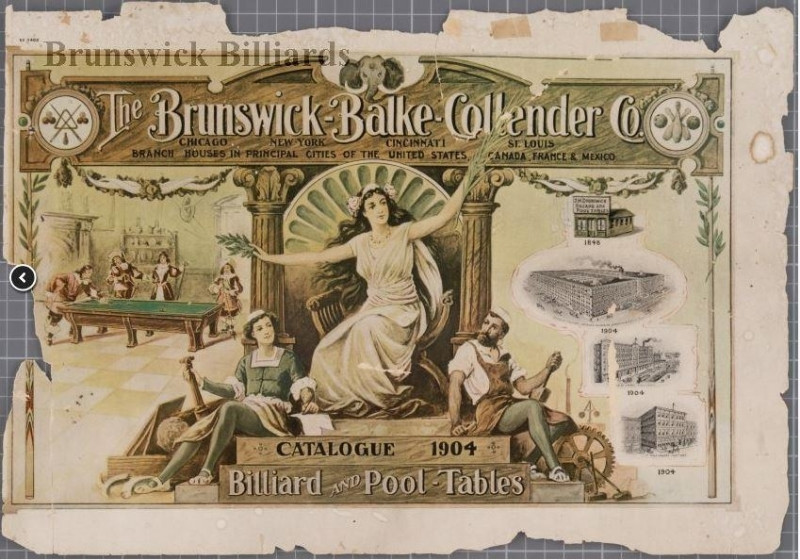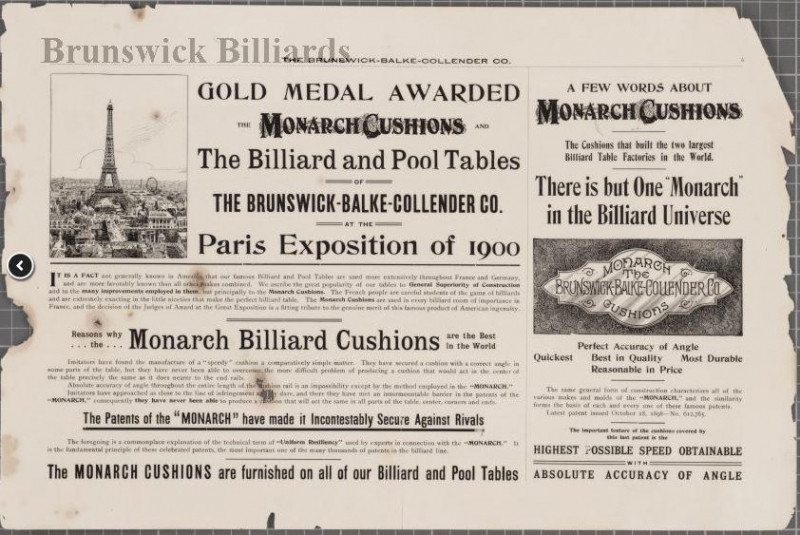-
Posts
554 -
Joined
-
Last visited
Content Type
Forums
Detector Prospector Home
Detector Database
Downloads
Everything posted by Glenn in CO
-
Have a great trip Steve, hope you come back with some great finds and adventures to share! Take care and have a safe trip.
-

How To Find The Best Gold Detector
Glenn in CO replied to Steve Herschbach's topic in Detector Prospector Forum
Any newbie wanting to get into nugget hunting and prospecting with the expectation of being successful, this is the best advice they can get. Great thread Steve! -

Are You A Big Gold Hunter Or Just Want It All?
Glenn in CO replied to Gerry in Idaho's topic in Detector Prospector Forum
Thanks Gerry for the very kind words. Unfortunately the old age crap is beginning to catch up on us, more my wife than me. We still enjoy the friendly competition when we are nugget hunting or coin/relic hunting. In fact she has found a gold coin and I'm still looking for my first. This coming July we will be celebrating our 50th wedding anniversary and I wouldn't change anything if I had to do all over again. I'm very blessed and we have many memories of great finds, adventures and friends. -

Are You A Big Gold Hunter Or Just Want It All?
Glenn in CO replied to Gerry in Idaho's topic in Detector Prospector Forum
Gerry, thanks for a great write-up, always enjoy your posts. I and my wife enjoy the hunt and if we come home with a few nuggets big or small all the better. It's great if friends or family can join you too. Here are some specimens that we found using a VLF detectors between 1990 and 1995. -

Nox'ed Another Little 3.3 Gram Beauty
Glenn in CO replied to Gerry in Idaho's topic in Detector Prospector Forum
Very nice nugget!! That one will be a nice specimen when cleaned up. 👍 -

Starting To Get Back To Normal
Glenn in CO replied to Glenn in CO's topic in Metal Detecting For Coins & Relics
Hi GB, The Ghost Town was a old coal mining camp that began in 1877 and closed in 1924. Can't reveal the town's name due to the site being on private land and our club's policy in protecting the site for future outing. One of most unique finds on a previous club outing from this site was a nameplate from a billiards table. -
Well our club held it first club outing last week since the pandemic began last year. The club has had Zoom meetings every month for those who wanted to keep in touch, but everyone was itching to get together and enjoy some relic hunting. The club trip leader announced that this outing would be the thirty-fifth time the club has been to this site, the last time was 2018 and many coins (Seated Quarter, Indian Heads, Shield Nickels) tokens and relics were found. This club outing V-Nickels, Shield Nickels, Seated Dime, Indian Heads, Wheat Cents, tokens and relics were found. You would think after thirty-five times to this site it would be some what hunted out, but the site keeps producing or is our metal detectors technology getting better? Mostly Equinox's, Garrett's, XP Deus's , Whites were being used. My wife was using a XP Deus and I was using a Nokta Kruzer with a five inch coil. Looking forward to the next club outing the first part of June and other outings for the rest of the year. Club members getting ready to head out to the Ghost Town Beautiful day to be relic hunting Here are some of the tokens and relics I and my wife found
-
Nice and Chunky Gold! WTG👍
-
Looking forward to see your review on the GPX 6000.
-

Straight Pepsi Took The Treasure Ark Out Today..
Glenn in CO replied to a topic in Metal Detecting For Coins & Relics
Great bottle finds, looks like the transom fix and new motor are working well for you! 👍 -

Pi ( TDI ) Coin Detecting Advice Request
Glenn in CO replied to GB_Amateur's topic in Metal Detecting For Coins & Relics
Tom_in_Ca any further discussion with you I will yield to Steve H. comment below: Please read and reread as needed. -

Pi ( TDI ) Coin Detecting Advice Request
Glenn in CO replied to GB_Amateur's topic in Metal Detecting For Coins & Relics
I couldn't think of his name of the top of my head, so I did a little research and his name is Greg Moscini. He operated Trans Bay Metal Detectors, I believe in the San Francisco bay area and not sure if he is still in business. Greg published the following in the White's TDI Manual: -

Pi ( TDI ) Coin Detecting Advice Request
Glenn in CO replied to GB_Amateur's topic in Metal Detecting For Coins & Relics
Never advocated or recommend using a TDI in a iron riddle site or area. If I remember correctly there was a White’s dealer in the Bay Area using a TDI and was very successful in parks. I guess if we happen to meet sometime in the future you will be wondering! -

Pi ( TDI ) Coin Detecting Advice Request
Glenn in CO replied to GB_Amateur's topic in Metal Detecting For Coins & Relics
Tom, I would like to respond to your post with my experience of using the TDI. I got one of the first production run of the TDI’s. My main intention in using the detector was for nugget hunting. Unfortunately the type of gold in the area we hunt the TDI was useless as well as other PI’s. So the TDI basically sat in the closet fo years. Basically using nothing but a VLF type detectors over the years the TDI wasn’t an easy detector to use and understand. This issue of using and understanding was more my fault as it was easier to use a VLF detector and enjoy detecting without second guessing what the detector was telling me. I finally retired and decided to spend more time and learn how to use the TDI. I met with Reg Sniff a few times in local parks and listen and watch how was using the TDI. For some reason I didn’t click with TDI right way and it became a very slow and sometimes difficult learning process. But I was determine to learn how to use the detector and have the success that Reg Sniff had. I have detected with friends and club members where I hear a potential deep target with the TDI and then have them see if they can get a response. This is what I base my comments on the depth capabilities of the TDI over a VLF detector. Again this based on conditions in local parks in my area, they my not work in other areas. I’m glad I committed to learning on how to use the TDI and continue to learn the more I use it. My reward is finding older coins each time I use it. -

Pi ( TDI ) Coin Detecting Advice Request
Glenn in CO replied to GB_Amateur's topic in Metal Detecting For Coins & Relics
Hi GB, The modification to my TDI was reducing the delay below 10us. Reg was hoping this modification would help in detecting smaller gold. Particularly the wire gold, unfortunately the modification did not help on this type of gold. My question would be in mineralization such as yours, would a TDI or PI achieve more depth than a VLF because of less mineralization? -

Pi ( TDI ) Coin Detecting Advice Request
Glenn in CO replied to GB_Amateur's topic in Metal Detecting For Coins & Relics
Tom in my area the answer is no. I and my friend who uses a TDI Pro get a clear audio response where someone using a Equinox or CTX3030 get a iffy or no response. My TDI is very stable in Ground Balance mode, Ground Balance mode off is very annoying. Yep and a lot of my detecting friends that got spanked! My TDI was modified as well as my friend’s TDI Pro was modified by Reg Sniff. -

Pi ( TDI ) Coin Detecting Advice Request
Glenn in CO replied to GB_Amateur's topic in Metal Detecting For Coins & Relics
Hello GB, My main detector for parks is the TDI. I will list the settings I use and why I use them. With these settings I only listen for the deeper targets ( 5”or deeper) and the TDI will respond to deeper targets with a not as strong audio response. The surface targets or near surface will give a very strong audio response and the deeper targets will give a weaker response. Using this technique you can ignore many trash targets and concentrate on deeper targets. These settings completely ignore bottle caps, pull tabs and foil no matter what depth they may be at. Nails and wire will give a good response, but keep in mind I’m only listening for the deeper target so I’m digging less trash targets. People using the Equinox in are area can achieve some targets at the depths we are getting, but the are listening for deep target response with a scratchy audio. Our soil is highly mineralized and VLF detectors are limited on depth. I was fortunate to live close by Reg Sniff and he was able to give me advice on what settings to use. It will take awhile to become proficient with the TDI, but after a lot of hours you will have a better understanding of it. Settings: Sensitivity- Set at Max. Delay- 10 Ground Balance- Just below the 5 mark. Threshold- Light High Conductor Setting Frequency- Set at 12:00 o’clock. I’m using the 12” Dual Field coil, but you definitely need a pin pointer as their is no meter or way of telling depth other than by sound. I would not use the TDI in a ghost town setting that has a abundance of nails or any other areas that have a abundance of nails, but any other common trash items even with a large coil is not an issue. But you have to go slow and be patience and listen for the deeper targets. -

Cleaning Gold Specimens - The Final Results
Glenn in CO replied to Glenn in CO's topic in Detector Prospector Forum
Hi Mitchel, These specimens and some others I finished cleaning I have not tried to sell yet. My favorites are the wire gold specimens, but I was surprised when I had other gold specimens appraised by Collector's Edge, a high end mineral dealer in Golden, Colorado, that the leaf gold specimens are more valuable than the wire gold specimens. The wire gold specimens have so much character and I enjoy what each specimen reveals during the cleaning process. -

Cleaning Gold Specimens - The Final Results
Glenn in CO replied to Glenn in CO's topic in Detector Prospector Forum
Actually A, B, and C are consider " bird nests" or crystalline wire gold specimens. Specimen D is consider a crystalline leaf gold specimen. Amazing what mother nature is capable of creating! Hopefully everyone clicks on the photos and use the magnifying tool. -
Here are the results on the four gold specimens from the post "Cleaning Gold Specimens - Step By Step Methods". Specimen A: \ Specimen B: Close up photos of Specimen B front and back: Specimens C: Specimen: D
-

Cleaning Gold Specimens - Step By Step Methods
Glenn in CO replied to Glenn in CO's topic in Detector Prospector Forum
PART SEVEN: This is the final step of the cleaning process on these gold specimens. After soaking the gold specimens in Muriatic acid a few days I then place them in a solution of baking soda and water. There is an aggressive reaction for a short period of time to the gold specimens causing more of the host rock to be removed. Then I rinse each gold specimen in water. I then have four containers in which two have Muriatic acid, one with baking soda and one with water. I then take each gold specimen and place it in the first container of Muriatic acid, then in the second container of Muriatic acid, then in the solution of baking soda and the rinse each specimen again in water. I repeat this process several times. The reason I place each gold specimen two times in the Muriatic acid is because the Muriatic acid becomes weakened when I rinse the gold specimens in water. I then soak the gold specimens in a solution of baking soda for a couple days and the rinse them in water. The final step is to apply steam to each gold specimen for additional cleaning. During the entire cleaning process there is some loss of gold from some of the gold specimens and it is a judgement call on how far one should continue the cleaning process. That judgement call can be great or it can be disastrous. Pictured below is the loss of gold from the cleaning process: I will post pictures in another thread of the gold specimens before and after the were cleaned. -

Cleaning Gold Specimens - Step By Step Methods
Glenn in CO replied to Glenn in CO's topic in Detector Prospector Forum
PART SIX: Here are the results of another round of soaking in the Whink solution and using baking soda and steam cleaner. Specimen A still has a lot of the host rock to remove, Specimen B has some host rock embedded in between the wires of gold, Specimen C has a tiny amount which the photograph does not show and Specimen D needs no further cleaning. At this point going forward using the Whink solution is not going to have the results I like to achieve. Next step I will use Muriatic acid with another round of baking soda and steam cleaner. I will post photographs of the final results of the last cleaning.

.jpg.098f6139f0ec519f07a46052ece97057.jpg)




.thumb.jpg.22f79e107f547842cdf83d5b0fe9853a.jpg)
.thumb.jpg.2715af45475cdf35b09a42756dec81ad.jpg)
.thumb.jpg.45ea8d274ca2dda552ab48eb5328f76e.jpg)
.thumb.jpg.4ab7e09831217285649ebe3c64cbd67c.jpg)
.thumb.jpg.b852b15a7fda8908bd8090b6b18e070e.jpg)
.thumb.jpg.2e27f23ba6c13be0ade094ca1d669396.jpg)
.thumb.jpg.b5b51b105a2e19bb369ebe8f2ee24c26.jpg)
.thumb.jpg.29fe3680c8c79060c7abaf0cce65a357.jpg)
.thumb.jpg.0444056cc4af46f7c8c2bf98cdf41bf0.jpg)
.thumb.jpg.16f2a148e0302933561cf0a123ed8606.jpg)
.thumb.jpg.8d92d5cb460582901123ec8edbbe181a.jpg)
.thumb.jpg.830b02bd55a4d836a75ebccf122a5623.jpg)
.thumb.jpg.99183899ad9de46122942032af71192b.jpg)
.thumb.jpg.296208af6ae0f230149ebfa3838a6052.jpg)
.thumb.jpg.96599ffd369d4756f7824b8d0e365af1.jpg)
.thumb.jpg.5fbe1562a93ede7f0aa4d975d3de776b.jpg)
.thumb.jpg.a860de354beeba14d28eeb1cad5f0a1d.jpg)
.thumb.jpg.586c3148c278f7b17760621863e393ba.jpg)
.thumb.jpg.9bfc8e3a63766bab600a94d6c2a45f5a.jpg)
.thumb.jpg.91c829501d5a38e15d90ab8fc87943a1.jpg)
.thumb.jpg.22f35bf1598c3acfffdeb8fcdfc8fdc1.jpg)
.thumb.jpg.ef67b52913ffecfd4ca6cc932739255f.jpg)